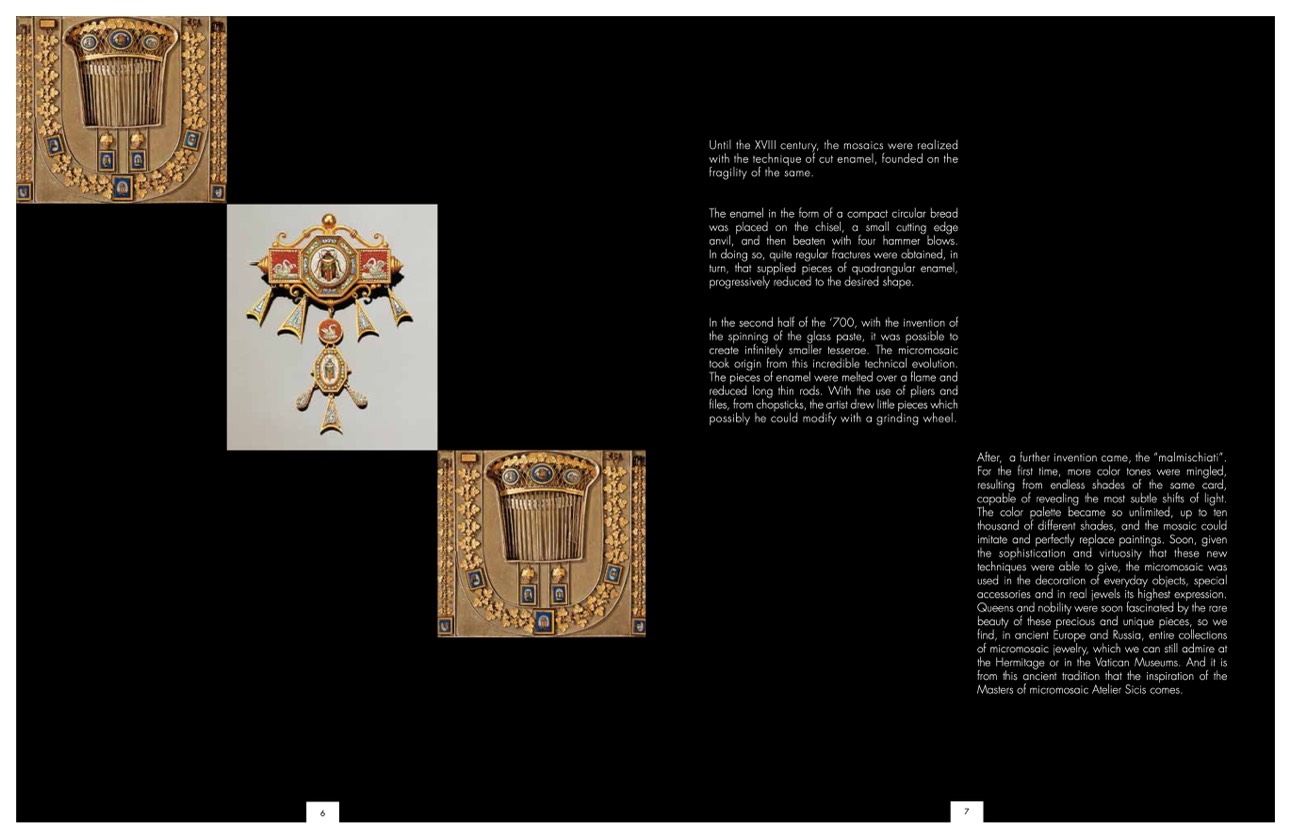
Until the XVIII century, the mosaics were realized
with the technique of cut enamel, founded on the
fragility of the same.
The enamel in the form of a compact circular bread
was placed on the chisel, a small cutting edge
anvil, and then beaten with four hammer blows.
In doing so, quite regular fractures were obtained, in
turn, that supplied pieces of quadrangular enamel,
progressively reduced to the desired shape.
In the second half of the ‘700, with the invention of
the spinning of the glass paste, it was possible to
create infinitely smaller tesserae. The micromosaic
took origin from this incredible technical evolution.
The pieces of enamel were melted over a flame and
reduced long thin rods. With the use of pliers and
files, from chopsticks, the artist drew little pieces which
possibly he could modify with a grinding wheel.
6
7
After, a further invention came, the “malmischiati”.
For the first time, more color tones were mingled,
resulting from endless shades of the same card,
capable of revealing the most subtle shifts of light.
The color palette became so unlimited, up to ten
thousand of different shades, and the mosaic could
imitate and perfectly replace paintings. Soon, given
the sophistication and virtuosity that these new
techniques were able to give, the micromosaic was
used in the decoration of everyday objects, special
accessories and in real jewels its highest expression.
Queens and nobility were soon fascinated by the rare
beauty of these precious and unique pieces, so we
find, in ancient Europe and Russia, entire collections
of micromosaic jewelry, which we can still admire at
the Hermitage or in the Vatican Museums. And it is
from this ancient tradition that the inspiration of the
Masters of micromosaic Atelier Sicis comes.

